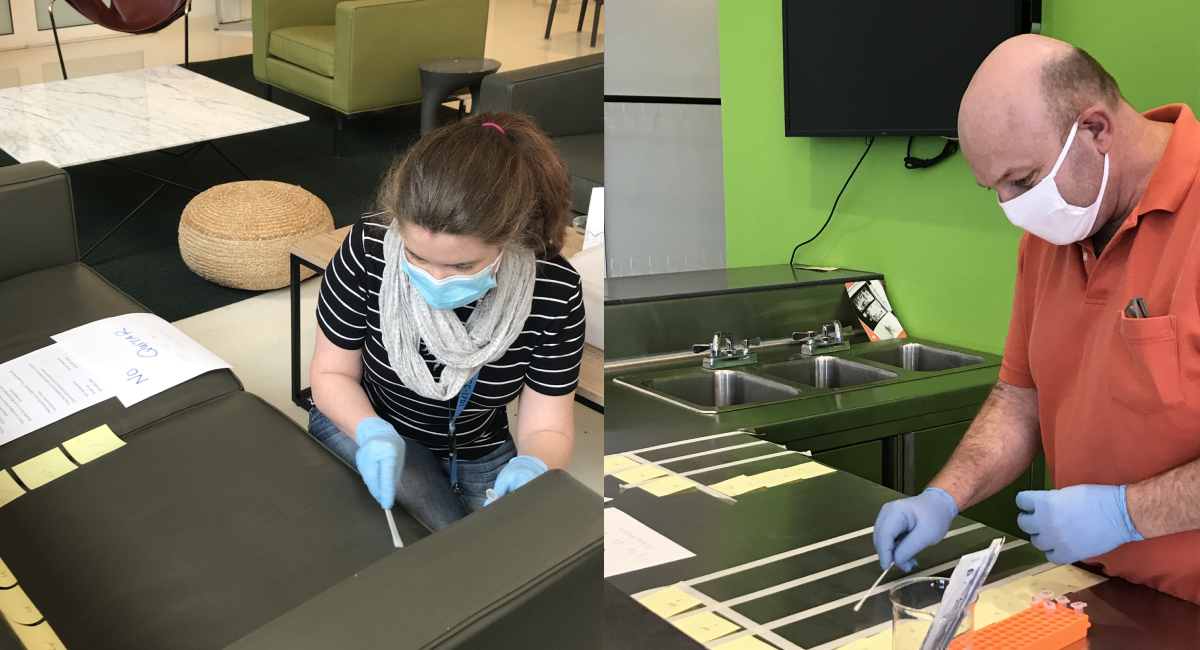
This post is part of the series 5 Questions with COVID Researchers. Hear from researchers across the Northeast United States about how they are working to mitigate the widespread impacts of COVID-19, and learn about opportunities for cross-disciplinary and cross-sector collaboration that could enable further progress in the fight against the pandemic. To learn more about COVID-related research, keep updated with virtual events and funding opportunities, and access other resources including datasets and guides, visit the COVID Information Commons. If you would like to be featured in this series, please email Katie Naum and Helen Yang.
Guest post by Dr. John Dennehy, Professor at Queens College, CUNY, and Principal Investigator on NSF Award #2032634, “Metapopulation Modeling to Develop Strategies to Reduce COVID-19 Transmission in Public Spaces.”
What is the problem you are trying to solve, and how will you and your team address it?
We are attempting to apply approaches developed in microbial ecology to understand how a viral pathogen such as SARS-CoV-2 can survive and be transmitted in academic environments. Our approach is a hybrid and uses both experimental and computational methods. We are developing a computational approach first used to study bacterial pathogens in hospitals to understand how academic environments facilitate viral transmission amongst students, faculty, and staff. In order to better inform and apply the model, we are testing viral survival and transmission in a variety of contexts that are common in these environments, such as person-to-person contact, airborne or droplet spread, or even the potential of fomite-based transmission.
We can then apply the model to test and optimize mitigation strategies. For instance, does an increase in the frequency of classroom cleaning significantly lower the survival time of viruses in the room? Can we achieve similar or better results by treating or changing room ventilation? Computationally, we hope to investigate whether short-term mitigation, such as cleaning, remains equally viable over the longer term as well.
What data are you working with? How will it be used?
Our research team is based at two different universities and is fortunate to have the cooperation of our respective institutions in developing our experimental data. Our experimental work is taking place across the various types of rooms that are typically used during the semester, including in both small and large lecture halls. We are using a non-pathogenic virus with biological properties similar to coronaviruses as a proxy for SARS-CoV-2 in order to understand the interactions between environment and virus.
Is your team seeking collaborators, subject matter experts, or other resources that you’d like to put a call out for?
We are always interested in developing relationships with researchers and meeting new potential collaborators. The current crisis requires us all to extend beyond our standard relationships and to make new connections that have the potential to foster new ideas and directions for research. This is true for us in particular, as we are applying new and novel ideas to understanding and controlling a viral pathogen.
How does this work contribute to the fight against the pandemic?
One of the largest and most complex problems related to this pandemic is how to safely open schools and colleges across the U.S. By approaching the potential spread of SARS-CoV-2 in academic environments specifically, we hope to also shed light on how mitigation approaches can be optimized across many others, such as workplaces. We are also aiming to identify which, if any, of our techniques, protocols, etc., can be potentially useful in other viral outbreaks and to develop a standardized set of recommendations that could then be pressed into service in future viral outbreaks without delay. We call this approach the Covid Code and hope that it might lower the impact of future outbreaks while also shortening the time to effective action on the part of academic institutions and other public spaces.
Where can people learn more about your progress?
As an integral part of our work on this project, we are developing a web-based resource that will include much of our data, along with detailed information on computational simulations and results. The website will be found at www.covidcode.net and will contain information on not only our work, but will also include links to and discussion of published work by other research groups that pertain to viral transmission of pathogens in academic environments and best methods for mitigation. We expect the website to be public by early fall.

John Dennehy is a Professor of Biology at Queens College, CUNY, and Deputy Executive Officer of the Biology Ph.D. Program at the Graduate Center, CUNY.
